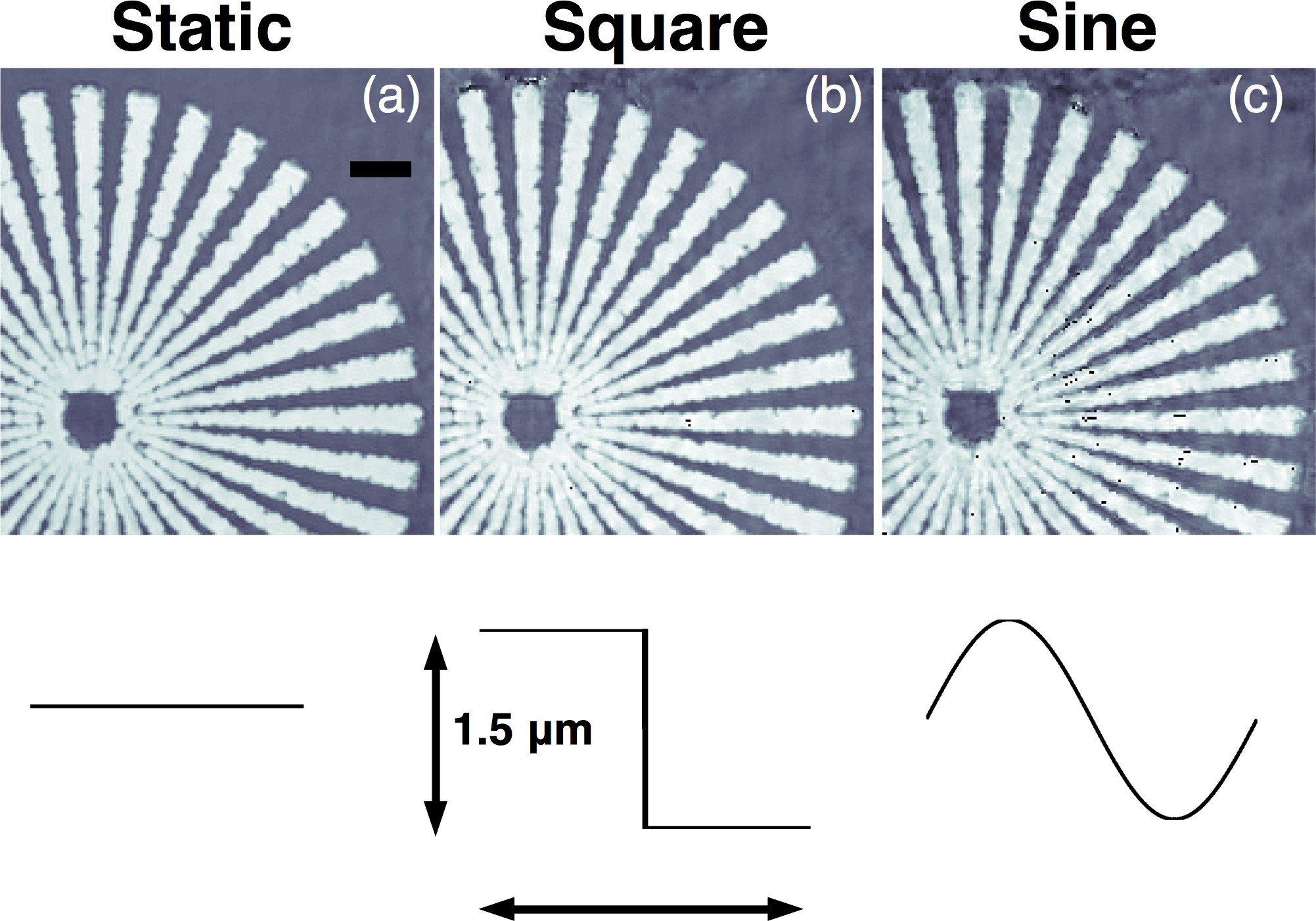Nature is ever on the move, and our ability to understand it in detail is often improved by “freezing” the motion of the dynamic systems under study using “snapshot” images. Standard imaging techniques have been hugely successful, but only when snapshot durations are much shorter than the timescales over which objects move. This requirement is becoming increasingly difficult to meet when imaging living systems and complex materials at the nanometer scale. While it may seem impossible to avoid blurred images when motions are much quicker than snapshot durations, there is actually a technique that promises to accomplish exactly that, a lensless imaging method under development called ptychography.
Working at the U.S. Department of Energy Office of Science's Advanced Photon Source (APS) scientists were able to demonstrate experimentally that x-ray ptychography could image a vibrating object whose frequency of vibration was one order magnitude faster than the measurement time. This was accomplished for two types of vibration and two amplitudes of vibration as well. The researchers speculate that this mode manipulation may prove very useful in designing custom mode shapes for use in high-resolution x-ray or electron imaging where illuminations having very specific properties are required.
Ptychography is a form of coherent diffractive imaging in which a specimen is stepped through a localized “probe” consisting of coherent x-rays, generating a series of diffraction patterns at the plane of a detector. By stepping the specimen in such a way that the illuminated area at each position overlaps with its neighbors, redundancy is introduced into ptychographic data that can be exploited during the mathematical reconstruction of an image. Although it was known since the late 1960s that this type of data could, in principle, recover an image of a specimen from diffraction data having wavelength-limited resolution, it was many years before relatively fast and robust iterative computational methods were developed. The key task has been to provide a solution to the classical phase-retrieval problem. Longstanding crystallographic phase-retrieval methods are not applicable because the objects being studied are typically not structurally periodic and are much more complicated than crystal lattices.
In this experiment, the researchers from University College London (UK), Brookhaven National Laboratory, Argonne National Laboratory, and the Research Complex at Harwell (UK) imaged a lithographed 1.5-µm-thick tungsten Siemens star using coherent 9-keV x-rays from the X-ray Science Division 34-ID-C beamline at the Argonne APS, an Office of Science user facility, that had been passed through horizontal and vertical slits. X-ray diffraction pattern measurements were taken as the sample was moved along a line perpendicular to the x-ray beam.
To examine the effect of sample vibration, the sample was simultaneously vibrated using an analog signal generator. The sine-wave and square-wave vibrations that were introduced had a frequency of vibration of 1 Hz, which was considerably faster than the scanning time of 6 sec per position. Vibration amplitudes of 1 µm and 1.5 µm were employed.
The researchers used a “mixed state” iterative algorithm that allowed for simultaneous reconstruction of Siemens star dynamics (object modes) and the probing x-ray wave fields (probe modes). This approach permitted the researchers to demonstrate experimentally not only how ptychography can be used image a quickly moving sample, but also how the mode shapes and coherence properties of the incident wave field can be manipulated and customized through use of vibration.
Overall image quality was high whether or not the sample was vibrating (Fig. 1). The estimated resolution of 49 nm was good enough to reveal small defects in the lithographic process used in making the Siemens star. Achieving this resolution with the vibrating sample required simultaneously reconstructing five probe modes along with the sample.
The researchers also studied the effect of vibration on the recovered probe modes, showing that the addition of different types of vibration changes the form of the modes. — Vic Comello
See: Jesse N. Clark1,*,‡, Xiaojing Huang2, Ross J. Harder3, and Ian K. Robinson1,4, “Dynamic Imaging Using Ptychography,” Phys. Rev. Lett. 112, 113901 (2014). DOI: 10.1103/PhysRevLett.112.113901
Affiliations: 1University College London, 2Brookhaven National Laboratory, 3Argonne National Laboratory, 4Research Complex at Harwell. ‡ Present address: SLAC National Accelerator Laboratory
Correspondence: *jesclark@stanford.edu
This work was supported by an FP7 advanced grant from the European Research Council. X.H. is supported by the Department of Energy, Office of Basic Energy Sciences under Contract No. DE-AC-02- 98CH10886. The experimental work was carried out at the Advanced Photon Source Beamline 34-ID-C built with funds from the U.S. National Science Foundation under Grant No. DMR-9724294 and operated by the U.S. Departmentof Energy, Office of Science-Basic Energy Sciences, under Contract No. DE-AC02-06CH11357. This research used resources of the Advanced Photon Source, a U.S. Department of Energy (DOE) Office of Science User Facility operated for the DOE Office of Science by Argonne National Laboratory under contract no. DE-AC02-06CH11357.
Argonne National Laboratory is supported by the Office of Science of the U.S. Department of Energy. The Office of Science is the single largest supporter of basic research in the physical sciences in the United States, and is working to address some of the most pressing challenges of our time. For more information, please visit science.energy.gov.

